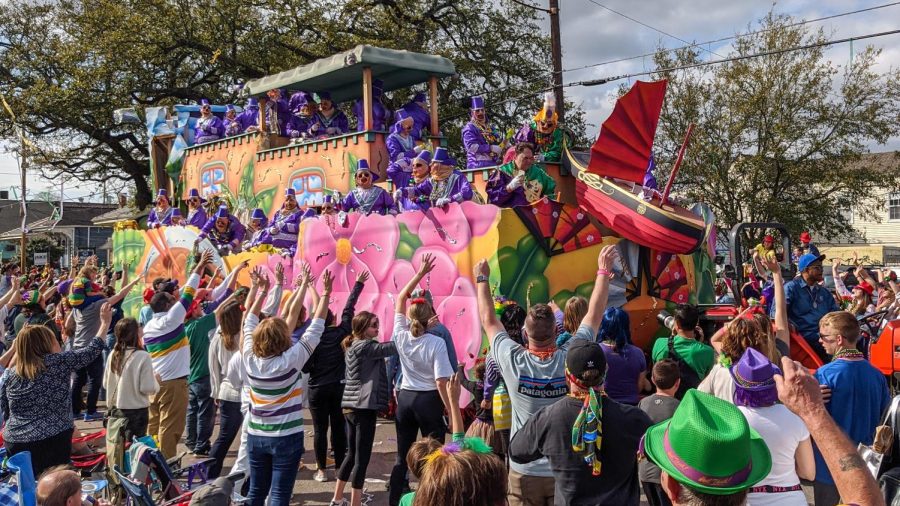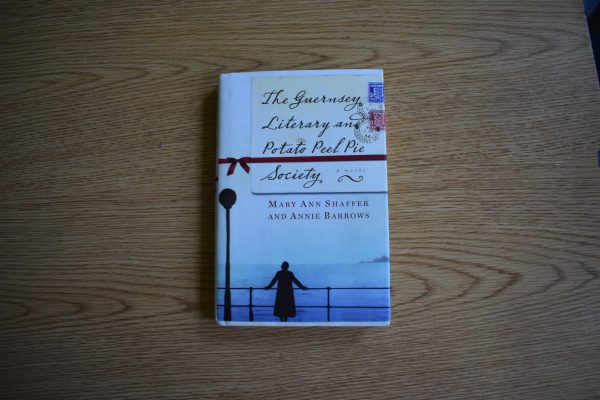Mardi Gras
A group of people cheer on a Mardi Gras float as it passes
Mardi Gras is the big party that takes place every year in New Orleans. There’s a big parade, crazy masks and costumes, and thousands of people. But how did a day meant to prepare for the fasting of the Christian Lent season turn into this? Originally, Mardi Gras was not a Christian holiday at all. The holiday was taken from Roman Pagan festivals known as Saturnalia and Lupercalia. These festivals were celebrated in early Rome to commemorate Spring and the lands’ upcoming fertility. When Christianity began to be accepted and practiced in Rome, religious leaders decided that rather than abolish their traditional holidays, they would integrate them into the faith. The new holiday was to be celebrated the day before lent, 40 days of fasting that were used as a penance between Ash Wednesday and Easter Sunday.
The first Mardi Gras took place on March 3, 1699. It occurred when French explorers reached a place near modern-day New Orleans, Louisiana. They had a small celebration at their landing location and dubbed the spot “Point du Mardi Gras.” Celebrations were held there and at other French settlements in the following decades. These celebrations were characterized by masked balls and lavish feasts followed by street parties later in the night. When the Spanish overtook New Orleans, the lavish holiday was banned and did not return until Louisiana became an American state. Mardi Gras returned in 1857 through an underground society of businessmen who organized a procession with festive floats and a marching band. This parade would mark the first of many to be held in New Orleans. After New Orleans was re-established in America, it began to spread to countries like Italy, France, Brazil, and the United Kingdom.
The easiest way to celebrate Mardi Gras is to dress in the festive colors of purple, green, and gold. Purple stands for justice, green for faith, and gold for power. These colors were selected to honor Russian Grand Duke Alexis Alexandrovich Romanov, who visited New Orleans in 1872 and attended the Mardi Gras celebration. These colors are also Louisiana State University and Tulane University’s school colors. This is most likely because the state is so associated with the grand holiday that the schools used those colors to represent themselves.
Another fun way to celebrate Mardi Gras is by decorating your house. There are many ways to do this, including hanging and draping beads, hanging garland, setting out candles, and putting party straws, masks, and jester hats around the house. The tradition of beads being associated with Mardi Gras has been around for a long time. It was inspired by Renaissance festivals that would take place before Lent. At these festivals, people would throw objects and food up in the air to celebrate the coming fast. Now, the beads make people and things more festive for the holidays. Garland is also used for the same purpose. Candles are mainly associated with the holiday since many celebrations occur later in the evening. Before there were street lights to keep things illuminated, people had to use candles. Now candles are made in bright colors and are used more as decoration than for their practical use.
Another festive way to celebrate Mardi Gras is by baking or ordering a king cake. A king cake is covered in purple, green, and gold frosting and sprinkles. Inside the cake is a plastic figure resembling a baby Jesus. This tradition takes place to honor the three kings that supposedly brought baby Jesus gifts after his birth. The tradition also states that whoever gets the baby in their piece of cake has to buy or bake the cake next year.
Unlike most holidays, Mardi Gras has no strict religious connections, making it a holiday for everybody. Mardi Gras is a fun way to get together with family and friends and have a fun celebration to celebrate life.

Joey Hester is a senior in their third year of journalism. They return this year as Co-Editor-in-Chief after working last year as a copy editor. They are...







